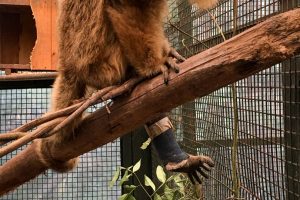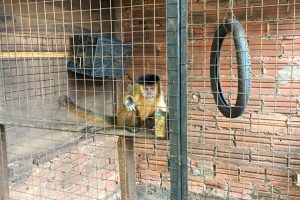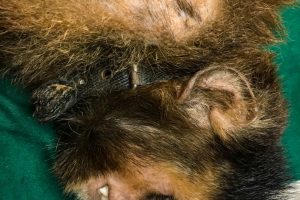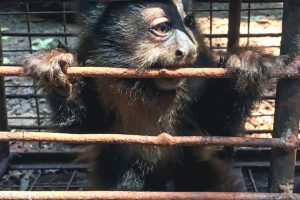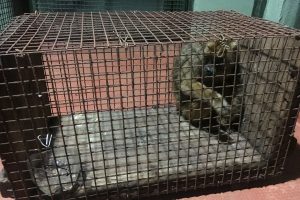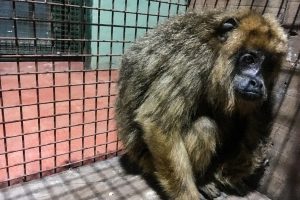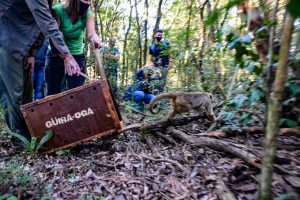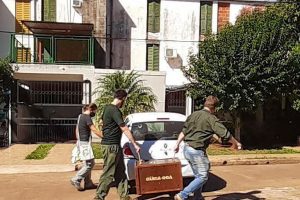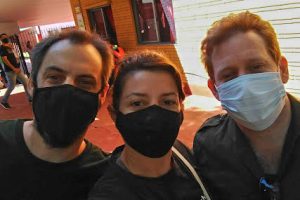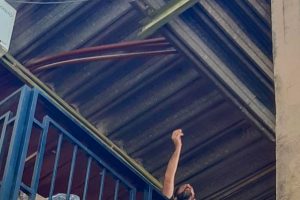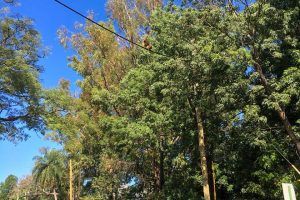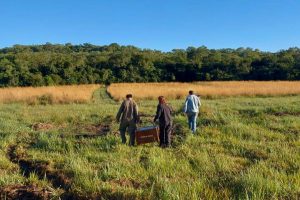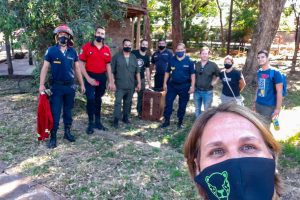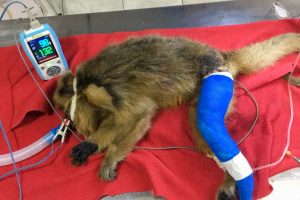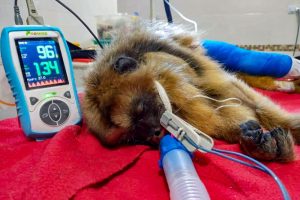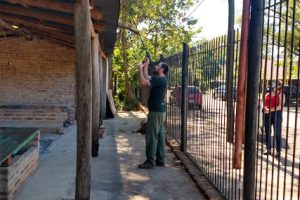Wildlife trafficking in Argentina
The most commonly trafficked species, including for international wildlife trafficking, are the yellow cardenal (Gubernatrix cristata), scarlet-headed blackbird (Amblyramphus holosericeus), the toco toucan (Ramphastos toco) and the turquoise-fronted amazon parrot (Amazona aestiva) among birds, turtles from the Chelonoidis family, and among mammals are the primates (mainly capuchins and howlers from the the genera Sapajus and Alouatta) and wild cats including ocelots and pumas (Leopardus y Puma).
Black and gold howler monkeys (Alouatta caraya) are one of the species which suffer most from illegal capture for the pet trade in Argentina. Monkeys and usually caught for selling live, and are often seized by the national and local wildlife authorities. In some parts of Argentina howler monkeys and caí capuchins are also hunted as bushmeat.
If you know of cases of wildlife trafficking or illegal pet ownership, you can contact the Brigada de Control Ambiental of the Ministerio de Ambiente y Desarrollo Sostenible de la Nación, which is in charge of applying law number 22421 for the conservation of wildlife. The Brigada also carries out investigations against illegal breeding centres. There are also similar bodies in each province of Argentina.
In all cases the best thing you can do for wildlife, is to leave animals free in their natural habitats. If they live in an area it probably means they are finding enough food to survive, and often food left by people with good intentions is not healthy for the animals.
Animals which are confiscated or handed in to authorities are sent to rescue and rehabilitation centres. These centres are often full, or do not have adequate conditions to properly rehabilitate animals, teaching them how to survive again in the wild, or even to ensure their health and well-being. Another problem for Argentine primates is the loss of habitat leading to individuals or groups persisting in urban areas. Small groups of howler monkeys can sometimes survive in remnant forest patches (for example, city parks or on university campuses), the best you can do in these cases is to leave them alone, don’t try to move or feed them. Sometimes members of the public mistakenly ask local authorities to move the animals, whereas emphasis should be put on education and finding ways to coexist with wildlife in urban settings.
Animals which are confiscated or handed in to authorities are sent to rescue and rehabilitation centres. These centres are often full, or do not have adequate conditions to properly rehabilitate animals, teaching them how to survive again in the wild, or even to ensure their health and well-being. Another problem for Argentine primates is the loss of habitat leading to individuals or groups persisting in urban areas. Small groups of howler monkeys can sometimes survive in remnant forest patches (for example, city parks or on university campuses), the best you can do in these cases is to leave them alone, don’t try to move or feed them. Sometimes members of the public mistakenly ask local authorities to move the animals, whereas emphasis should be put on education and finding ways to coexist with wildlife in urban settings.
The release of trafficked animals to the wild is commonly known as re-introduction or translocation depending on the specific situation. Reintroduction refers to releasing animals to an area within their natural distribution, from where the species has become extirpated. The release of ex-captive animals to natural habitats is possible, but can sometimes have unforeseen results. There are multiple risks to the individuals involved, for the population as a whole, and for other species in the same area. For these reasons, NPC Argentina are developing robust methods and baseline knowledge to aid releases, based on surveys, local knowledge, education, and information sharing, to help ensure releases are made with a full analysis of the risks involved.
Prior to releasing or moving animals (translocation) the origin of the individuals (i.e through genetic studies), the release site conditions, the health of the animals, the carrying capacity of the new area, and the ability of the released animals to survive (i.e. do they know how to find sufficient food and avoid dangers?), needs to be taken into account. We help rescue centres determine these variables. Our veterinarian, Dante Di Nucci, works at the Refugio de Animales Silvestres de Güirá-Oga, Misiones province, helping in the rescue of wildlife. In NPC Argentina we contribute with these and other rescue centres evaluating the possible origins and future release sites of rescued animals, as well as ensuring that post release monitoring is carried out in translocation or reintroduction programs.
We understand that many wild animals, especially primates, look cute and adorable and often we feel we want to pet and cuddle with them. But this is actually bad for the animals involved. Wild animals should be in their natural habitats with other members of their own species. When placed in domestic environments these animals lose the ability to survive on their own, often even lose their species identity, and if released without proper preparation they will not be able to climb properly or find enough of the right foods, or defend themselves against predators. By buying animals we are condemning them to a life in captivity. In many cases, even with the best training and care it is not possible to release animals back to the wild, not only because of the factors mentioned above, but also as there are everyday less and less natural environments for them to be released back to.
We ask you to help us in our fight against wildlife trafficking and the illegal pet trade by not buying animals, or sharing inappropriate materials, such as videos, pictures, or memes featuring wildlife in unnatural conditions.

